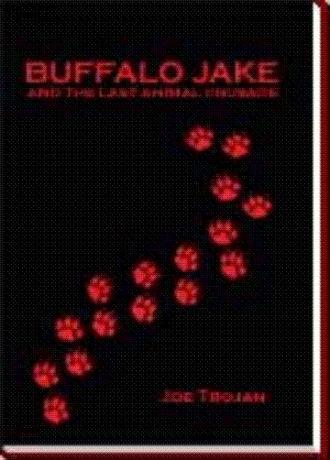Buffalo Jake and the Last Animal Crusade
by
Book Details
About the Book
In 1995, an American biologist working in China made
a discovery that will forever alter the way we think about animals. He discovered that pandas have a paw print
language that they use to leave messages for other pandas. His research has drawn so much attention,
the first translation of the paw print language is being published in this
book.
After spending years deciphering the paw print
language, he found a cave in a remote part of the Lingshan Mountains of China
in which the pandas had made extensive paw print markings in soft
sandstone. This book is a translation
of the story written by the pandas more than 80,000 years ago about a great
conflict with a species that almost wiped out life on earth.
The paw print writings describe a great crusade by the animals to restore the web of life before its deterioration destroys them all. We may owe our own existence to the heroic efforts of animals more than 80,000 years ago who prevented the destruction of the planet. Anyone who reads this book will never be able to think the same way about animals, or ourselves, again.
About the Author
Home for Joe Trojan is on the Marina Peninsula in Los Angeles, California where he actually enjoys swimming in the cold Pacific Ocean in the early morning when most sane people are still wrapped-up nice and cozy in their beds. His favorite hobby of the moment is dragging his friends to karaoke where he makes up for his lack of talent by turning up the echo and singing very loudly. He says he wrote Buffalo Jake for the sheer joy of it. Most of it was written in the first thirty minutes after waking up when his dream state and reality were still all tangled together. He says Buffalo Jake should come with a warning label because it has hidden political messages in it that can only be deciphered by reading the entire book backwards. He wants his epitaph to read: "Self-Amusing". On the serious side, Joe Trojan received his B.S. degree in Biological Sciences from the University of Southern California in 1985 where he studied molecular biology. He graduated from Loyola Law School in Los Angeles in 1988. He is a registered patent attorney who by the age of 37, had built his own law firm in Beverly Hills employing five attorneys specializing in biotechnological and mechanical inventions. He has extensive experience as lead counsel in federal trials and appeals in cases involving intellectual property rights. He donates his time to the California Museum of Science and Industry to assist the Museum with intellectual property issues, and he has successfully sued in federal court to prevent the destruction of public murals at no charge to the artists.


